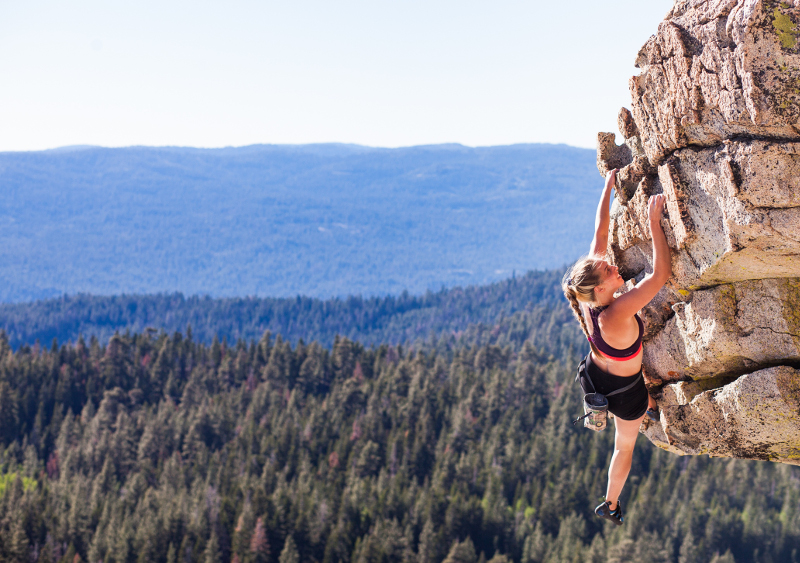Dean Fleming was born and raised in Sonora, CA, the gateway to Yosemite Valley. Once the youngest certified professional climbing guide in the country, he eventually combined his love of writing, photography, earth science, and rock climbing into a career of sharing his stoke and expertise through publishing. Dean is the author of the Columbia Bouldering Guidebook and the founder and editor of California Climber Magazine. In this series, he’ll be sharing a taste of some lesser-known, high-quality climbing areas in our favorite state, plus how to take care of these special places for years to come.
Words and images by Dean Fleming. A portion of this article was originally published in the Fall 2017 issue of CA Climber.
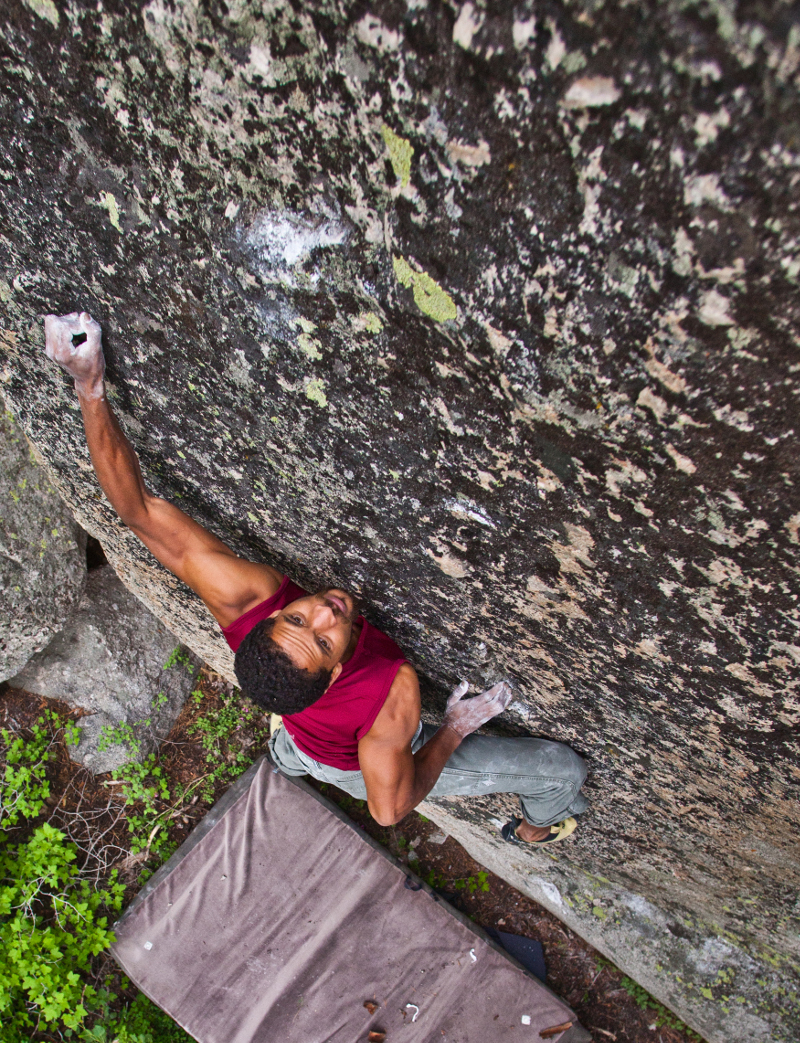
Shorts and flip flops are a bad choice. Crawling beneath head-high scrub oak, the sharp Manzanita branches dig and scratch into thighs. Underfoot spines of the dreaded Sonora Pass White Thorn plant pierce easily through the soft foam of flip flops, quickly driving themselves deep into the soles of supple human feet. Along the Highway 108 corridor this type of seemingly endless bushwhacking is often rewarded by grainy, short, turd-like lumps of mossy and featureless stone. Yet a small quantity of iron-hard vibrant orange granite, often referred to by locals as “the Gold Standard,” keeps us thrashing.
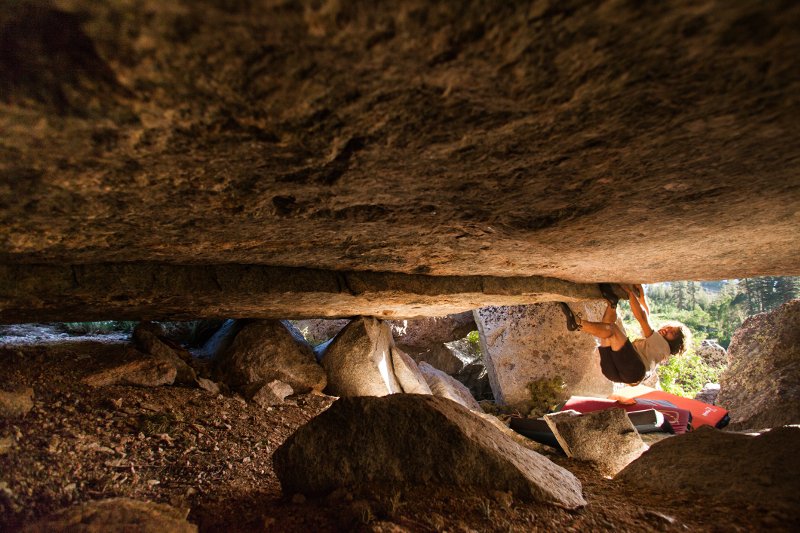
They call it selective memory; when time wipes the mind clear of the hardships and toiling, choosing only to remember a small number of idyllic occasions. Like rounding the top of an exposed granite slab, or entering a vast clearing in the dense forest as solid granite boulders of appropriate height and angle reveal themselves. Hidden among the thick brush lining the Sonora Pass Highway, a rare breed of striking gold boulders with black-streaked striations and incut patina holds can be found in small quantities. These golden eggs are often spread few and far between zones that host just a handful of high quality problems.
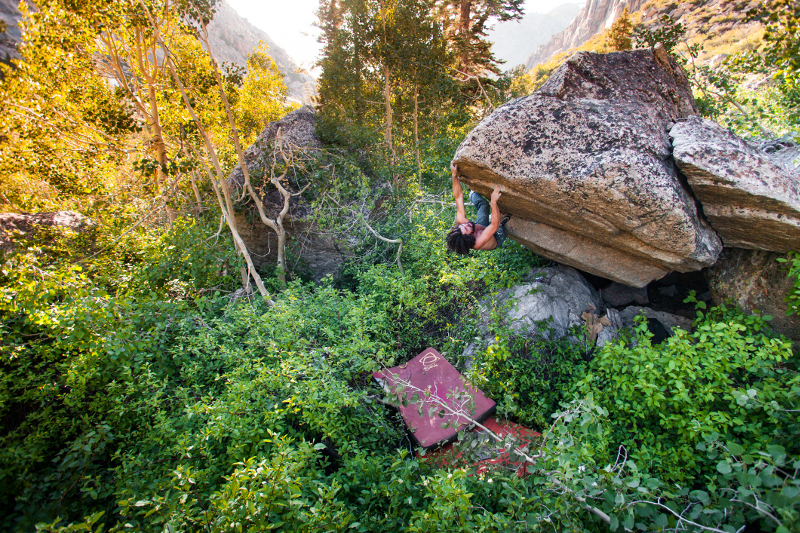
In the early 1990s the few climbers living along the Sonora Pass Highway plucked the most easily accessible problems. These rare gems can be found on boulders with convenient access via forest service roads or paved pull-outs. Areas like Pump Rock, Donnell Vista, and Chipmunk Flat are obvious, and were quickly scrambled by climbers like Brian Carkeet, Dave Yerian, and especially Phil Bone, who has likely scoured and scaled more terrain in the region than any other. In more recent years climbers such as Lance Kimball, Daniel Forbes, and Anthony Allopena have done more thorough developments, especially near Burst Rock and higher up on Sonora Pass.
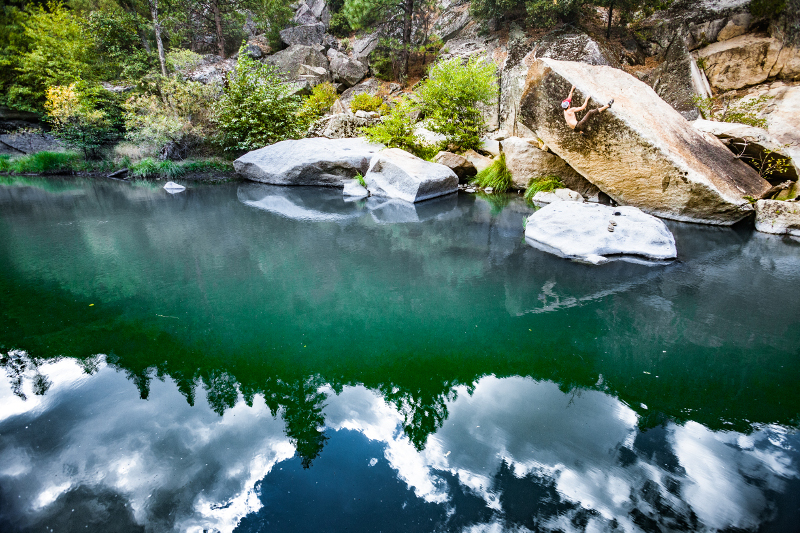
Although some have thought to have found the next world-class zone along the Highway 108 corridor, the style of bouldering on Sonora Pass remains consistent; a few scattered gems here and there, but nothing quite condensed enough to warrant the drive from any major city center. Nevertheless, when the fall season begins in early October, here we are again, scrambling and scratching our way through the brush and brambles, tossing pads into ravines and over Manzanita, with eyes pointed to the next golden blob far on the horizon. For when you do stumble onto a block worthy of the Gold Standard, the quality can be impeccable and the style of climbing can be interesting.
Yet over the years most of us have succumb to a realistic ideology of Sonora Pass bouldering; the idea that this never ending search for boulders is simply an excuse to spend time in solitude with unmatched scenery in a place we call home.
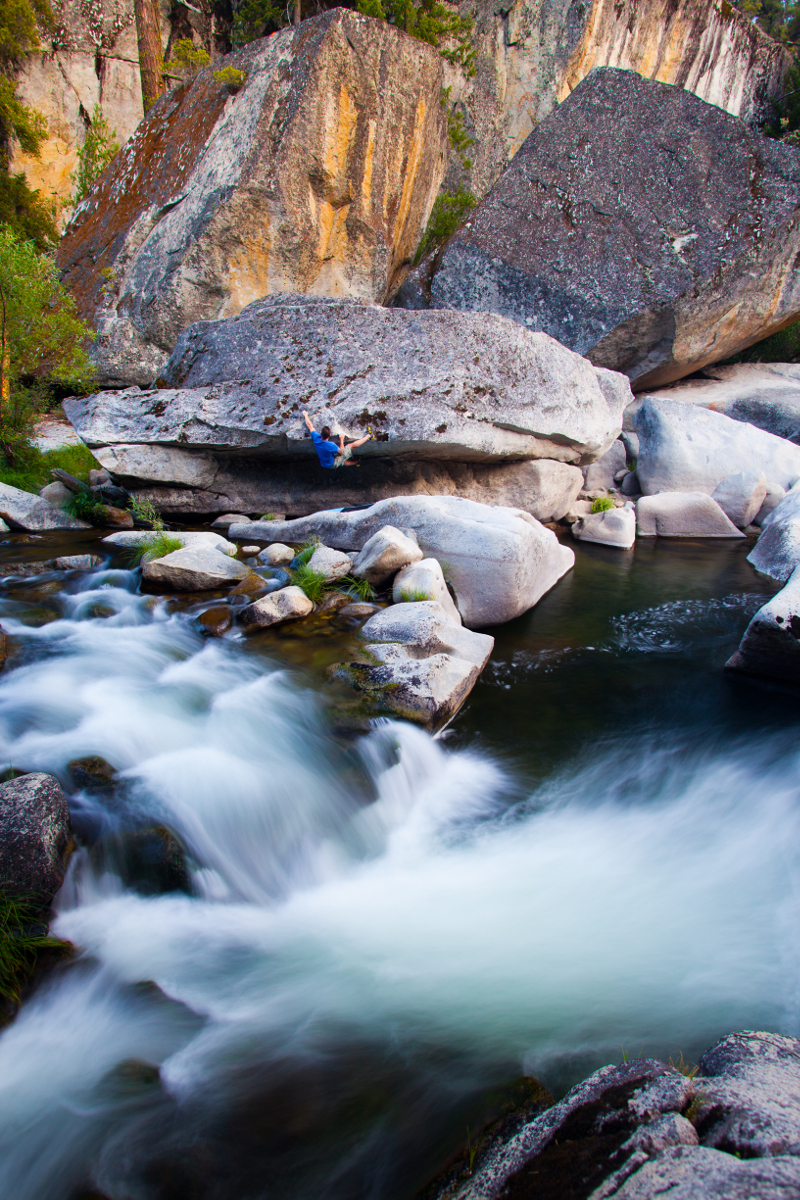 Special Concerns
Special Concerns
Excellent free camping is perhaps the most attractive incentive to bouldering along the Sonora Pass Highway. Burst Rock, Pump Rock and the boulders near Chipmunk Flat are all found near amazing, convenient campsites near rivers with incredible views. The fact that these campsites are free and legal still amazes me every time I visit, but with such freedom comes great responsibility.
Over the past decade I’ve personally witnessed larger and larger amounts of trash and human waste piling up at these campsites—especially near the summit of Sonora Pass. There are bathrooms located at the Sonora Pass Trailhead for the Pacific Crest Trail and also bathroom facilities located at Donnell Vista just a few miles west of the summit of Sonora Pass. Please consider using these facilities whenever possible. Otherwise, please consider using Wag Bags or some other kind of method to properly dispose of human waste and trash when visiting.
The Sonora Pass area is also one of the most dangerous wild fire zones in California. In summer and fall campfire restrictions are in place and should absolutely be followed with great scrutiny.
